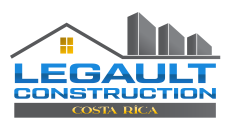Critical Steps when Building a Costa Rican Home
It can be an extensive process to build a home in Costa Rica, but it can also be tremendously rewarding and, for many, it is the culmination of a life-long dream. If this is a path you’re setting out on, consider the following steps to help you reach your goal.
- Figure out your budget. You want to have both a ceiling and a floor. Once you know what you can afford to spend, then you can focus on finding the right property, designing the home, etc. The budget is not the most exciting part of the process, but it is a crucial starting point that sets up everything else.
- Decide how you want to finance the home. Some buy the land and materials with cash. Others take out a mortgage loan and pay it back over the years or even decades to come. You will typically need pre-approval first if you’re using a mortgage, so you need to get that before making an offer on a property.
- Find the right land. Consider the proximity to nearby towns, where you need to be for work, how much land you really want, and what utilities are already connected — or how much it will cost to do so. Consider any restrictions on that land, run the soil samples, and secure the proper water letter from the engineering department.
- Make an offer and then close the deal. Before closing, double-check any local zoning requirements and get all of your building permits in order. You do not want to buy the property and then discover you can’t build your home the way you want.
- Start designing the home. For most people, this is where the true excitement lies. You need to work with an architect to take your ideas – layout, amenities, room sizes, number of bedrooms, etc. – and make them into a solid blueprint that projects within your budget.
- Get the rest of your permits. You may need to communicate with the INVU regarding river setbacks and the CIFA regarding your home drawings. You need power permits, likely from the CNFL, and you may need to contact Acueductos y Alcantarillados for water. Large homes (in excess of 3,300 square feet) need environmental certifications from SETENA, and then you’ll need your final construction permit.
- Add the finishing touches. Your blueprint shows you the basic design, but you and an architect can pick fixtures, finishing materials, paint colors, and much more. Again, this is the exciting part where you get to be creative and make your dream home.
- Start the construction process. The timetable depends on a lot of factors, such as the contractor you choose, the weather during construction, and the size of your home. But you have everything in place to begin!

